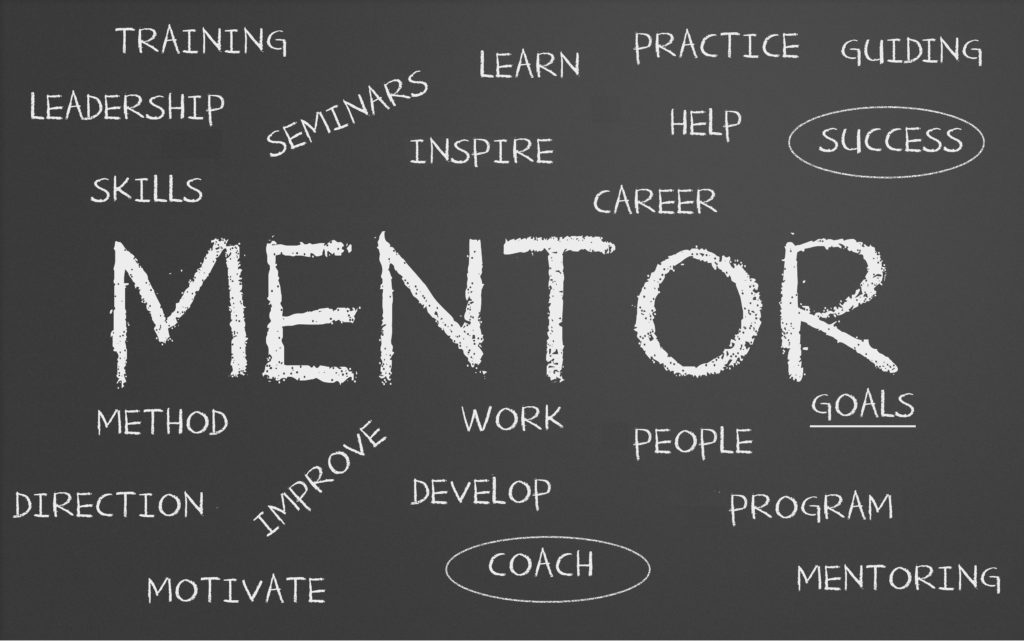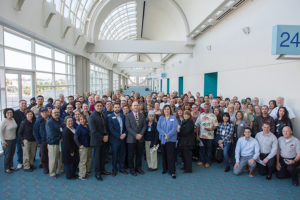Angela Vanderwell Named Eccles Theater General Manager
Angela Vanderwell was named as the new General Manager of the George S. and Dolores Doré Eccles Theater in downtown Salt Lake City and Associate Division Director for the Salt Lake County Center for the Arts.
“The Eccles Theater is the anchor of the Salt Lake Cultural Core and our region’s premier arts and entertainment venue,” Vanderwell said. “I am honored to lead our team as we develop and  streamline our operations and provide continued excellent customer service to presenters and patrons alike.”
streamline our operations and provide continued excellent customer service to presenters and patrons alike.”
The venue opened in October 2016 and has already hosted more than 250 events and 500,000 patrons.
Eccles Theater houses the 2,500-seat Delta Performance Hall, the 150-seat Regent Street Black Box, the McCarthey Plaza, two patron lounges, and the in-house Encore Bistro.
Vanderwell has been at the Center for the Arts for 12 years as an event manager and has 20 years of event and venue experience. She recently earned her IAVM Certified Venue Professional designation, is working toward her Certified Facilities Executive certification, and is a magna cum laude graduate of the University of Tennessee.
Schuler Shook Promotes Three, Adds New Team Member To Various Company Offices
Allied Member Schuler Shook recently announced three company promotions of designers as well as the introduction of their newest team member. All demonstrate a stellar commitment to our clients and show leadership through example.
Harold “Chip” Ulich, ASTC, Senior Theatre Consultant
Chip Ulich, ASTC, moved from the Dallas office of Schuler Shook to California where he helped grow the San Francisco Bay office. He has planned ![]() and designed scores of theatres in the West and Southwest U.S. Dedicated to service in the field of theatre consulting, he is the Vice President of the American Society of Theatre Consultants. Current and recent projects include Crested Butte Center for the Arts in Colorado, Oklahoma State University McKnight Center for the Performing Arts and Austin ISD Performing Arts Center.
and designed scores of theatres in the West and Southwest U.S. Dedicated to service in the field of theatre consulting, he is the Vice President of the American Society of Theatre Consultants. Current and recent projects include Crested Butte Center for the Arts in Colorado, Oklahoma State University McKnight Center for the Performing Arts and Austin ISD Performing Arts Center.
Kent Conrad, ASTC, Senior Theatre Consultant
Kent Conrad, ASTC, enhances his theatre consulting work in the San Francisco Bay office with a deep background in technical theatre. He served as production manager for multiple regional theatres and for UCLA’s department of Theatre, Film and TV, and he consulted on two venues in Tokyo for Walt Disney Entertainment. He sees each project from multiple perspectives and is a trusted collaborator and advocate. Kent’s projects include Stanford Memorial Auditorium and Pigott Theatre Rigging, Salt Lake Community College Center for Film and New Media, and Tokyo DisneySea – Broadway Music Theatre.
Jess Baker, Project Lighting Designer
Jess Baker, IES Associate Emerging Professional, is based in Schuler Shook’s Chicago office. A crossover talent with a technical theatre background as well as architectural lighting design experience, Jess combines active listening skills with painstaking thoroughness to bring client’s visions to life. Recent and current projects include American University Beirut Medical Center, JPMorgan Chase Polaris Hub, and The Hyatt Headquarters.
Jean Gonzalez, Theatre Specialist
Jean joins the Dallas office of Schuler Shook as a Theatre Specialist. A trained scenic and lighting designer for the theatre, Jean combines a keen eye for detail with a strong belief in the benefits of collaboration to create theatres that support the artists and the audiences. He used to bowl semi-professionally and would adopt any dog he meets, if he could.
Mentor Connector: Reflections & New Year’s Resolutions

As we celebrate this time of wonder and renewal, a warm feeling of gratitude fills our spirit and reflection upon the past year seems instinctive.
2017 was a particularly successful one for the Mentoring Committee and the Mentor Connector Program. Committee members wrote blogs, laughed a lot together at our booth at VenueConnect, and shared insights on The Venue Live Podcast. Past-participants and committee members are spreading the word, and it’s affirming to see the number of partnerships growing.
We are ever grateful to the small yet mighty IAVM committee who facilitate the Mentor Connector Program year-round with the dedicated support of IAVM Member Care Manager Summer Beday. As the program now has two year-long classes or “cycles” per year – one beginning in the spring and one in the fall – the work behind the scenes is excitingly self-perpetuating. The Mentoring Committee loves seeing new and returning Mentees, Mentors and Coaches each cycle.
I would like to recognize those IAVM members who took time out of an already demanding work schedule to focus on their own personal and professional growth as a “Mentee.” These brave members embrace opportunities for evolution and development. Of course, without the time, encouragement, and professionalism from our “Mentors,” there would be no one to help shape and cultivate the passion of fellow venue managers. I’d also like to tip my hat to the “Coaches,” who play a quieter supporting role in the process for multiple partnerships at a time.
Here are the IAVM Members who completed the Mentor Connector Program in 2017:
| Mentee | Mentor | Coach | |
| Michael Robinson II | Russell Vandenberg, CFE / Seaside Civic and Convention Center | Terry Genovese, CFE / ASI Displays, Inc. | |
| Kevin Calhoun / Stephen F. Austin State University | Rudy Betancourt / Macky Auditorium -University of Colorado | Frank Bradshaw, CFE, CMP/ Val A. Browning Center for the Performing Arts | |
| Michael Berkery / Indiana State Fairgrounds | Clifford “Rip” Rippetoe / San Diego Convention Center | Jim Brown, CFE / First National Bank Arena | |
| Jana Brooks / Maryland Stadium Authority | Aaron Schmitt, CVP / Heintz Field | Jim Brown, CFE / First National Bank Arena | |
| Joseph Leon / Capital One Arena | Kevin Spence, CFE / Hampton Coliseum/ Hampton Arts Commission | Jim Brown, CFE / First National Bank Arena | |
| Jordan Lingreen / Krannert Center for the Performing Arts | Jennifer Hammontree / Portland’5 Centers for the Arts |
Larry Gawronski, CFE / Topeka Performing Arts Center | |
| Christine Spiller / Pepsi Center | Larry Fontana / Verizon Theatre at Grand Prairie |
Frank Bradshaw, CFE, CMP/ Val A. Browning Center for the Performing Arts | |
| Brian Wright /Mercedes-Benz Stadium | Jason Pedone / John Paul Jones Arena | ||
| Leigh Wooldridge / McAllen Convention Center | Alexandra Carls-Johnson/ AT&T Stadium | Robyn Williams, CFE / Portland’5 Centers for the Arts | |
| Jessica Beckmann / Chaifetz Arena | Sue Walker, CFE / State Farm Center | Tim O’Connell, CFE / Cincinnati Reds Great American | |
| Ryan Kichler / Yonge-Dundas Square | Peter Church / Maple Leaf Sports & Entertainment | Kevin Spence, CFE / Hampton Coliseum/ Hampton Arts Commission | |
| Dan Dreier, CVP / Minneapolis Convention Center | Erin Jepson, CMP / regon Convention Center | Kevin Spence, CFE / Hampton Coliseum/ Hampton Arts Commission | |
| Joe Durr / Portland’5 Centers for the Arts | Richard Haycock, CFE | Tim O’Connell, CFE / Cincinnati Reds Great American | |
| Michael Henry / USA Hockey Arena | Dot Lischick, CFE / Colorado Springs World Arena and Pikes Peak Center | John Siehl, CFE / VenuWorks | |
| Melanie Lee / Major League Baseball | Jessica Reid-Bateman / Capital One Arena | Tim O’Connell, CFE / Cincinnati Reds Great American | |
| Sarina Sutton / University of Colorado Boulder | Sandy Richmond / Olympia Entertainment | Jeff Mann, CFE / Xfinity Center/ Orpheum Theater | |
| Nicola Martinez / Del Mar Fairgrounds – 22nd District Agricultural Association | Daniel Huerta / Fair Park, TX | Larry Perkins, CFE, CMP, CPP / PNC Arena | |
| Laura Zeeb / GES | Rob Henson, CFE / Scope Arena | Carol Wallace / Carol Wallace & Associates, Inc | |
| Angie Hanley / Owensboro Convention Center | Karen Totaro, CFE / San Diego Convention Center | Carol Wallace / Carol Wallace & Associates, Inc | |
| Nick Buchs / Georgia State University | Wendy Riggs / Walton Arts Center/ Walmart AMP | John Siehl, CFE / VenuWorks | |
| Ryan Harder / Allen Event Center | Bryan Miller, CMP, MBA/ Virginia Beach Convention Center | Jimmy Earl, CFE / Frank Erwin Center | |
| Zakiya Smith-Dore / Phillips Center for the Performing Arts – University of Florida | Kevin Dooley / Philips Arena | Jimmy Earl, CFE / Frank Erwin Center | |
Are you looking for a 2018 New Year’s Resolution you will actually follow-through with? Participate in the MC Program! IAVM’s Mentor Connector Program is an excellent vehicle to enhance your venue management career. Both mentors and mentees benefit from participating in the program—mentors become better teachers and mentees benefit from the knowledge and direction they gain. The partnership introduces both individuals to a new network of colleagues.
Mentor Connector has no age limitations. You may want to learn about new safety & security technology, the latest techniques in ensuring the fan experience, advocacy laws that are applicable in your state or region, management & leadership trends, or navigating your way in to the industry—everyone can learn something from someone. If you’d like to learn more about the value of this free member benefit and fill out the application online, check out our webpage.
Congratulations to all who successfully completed the Mentor Connector Program in 2017.
We can’t wait to see who we meet in 2018!
Kathryn Carlson
Chair, IAVM Mentoring Committee
IAVM Brings Security Training To San Diego Convention Center
By Barbara Moreno
The staff of the San Diego Convention Center will be starting the new year with new safety and security tactics, following recent training from two top experts in the conventions, meetings, and venue industry.
Mark Herrera, Director of Education for the International Association of Venue Managers (IAVM), and Paul Villotti, Director of Life Safety for Henderson Engineers, provided two days of training to nearly 300 staff members and outside partners, including labor leaders, event security companies, and representatives of the San Diego International Airport and San Diego Theaters.
Henderson Engineers, provided two days of training to nearly 300 staff members and outside partners, including labor leaders, event security companies, and representatives of the San Diego International Airport and San Diego Theaters.
The trainings, held on December 14 and 15, 2017, is part of the San Diego Convention Center’s commitment to providing a safe environment to the nearly 900,000 attendees who visit the venue each year.
“Hosting events like this is important because it raises awareness levels among all staff including members of the team who may or may not have anything with ‘security’ in their job title,” said Josh Layne, Director of Public Security and Technology. “Training our housekeepers, grounds workers, engineers and concierge personnel works as a force multiplier. When all staff are actively thinking about security and know how to recognize when something just doesn’t seem right, it means that there are 100 additional sets of eyes looking for potential threats.”
The two days of training are part of the San Diego Convention Center’s commitment to working as partners with IAVM in a coordinated approach to protecting customers, guests, staff, and stakeholders within the convention and meetings industry.
The convention center’s leadership team, led by President & CEO Clifford “Rip” Rippetoe, CFE, and Executive Vice President and General Manager Karen Totaro, CFE, as well as its Board of Directors are working with the IAVM Industry Security Council.
“As a past Chairman of the Board for IAVM, I am completely immersed in ensuring our team is exposed to all the educational opportunities the IAVM offers,” said Totaro. “I have had the pleasure of participating in this expanded security training several times and worked with Mark Herrera and Josh Layne to make it a reality here in San Diego for our team and other community teams alike.”
Layne sits on IAVM’s Safety and Security Committee to help develop risk mitigation guidelines and share best practices within the industry to improve safety nationwide.
“A great venue such as the San Diego Convention Center ensures that venue and security staff have regular training and also regularly test knowledge, skills and reactions in a variety of different situations,” he said. “Training, in particularly reality-based training, inoculates everyone to conditions that provide the tools and resources to better plan, prepare and recover to any condition.”
Herrera added that the San Diego Convention Center is part of an overall $283 billion industry, servicing millions of people who attend meetings, conventions and exhibitions across the country.
Rippetoe said that this training is just the beginning of a more holistic approach to security training, reiterating that every member of the team is critical to security.
“It is my goal that we take a lead role and a collective responsibility when it comes to mitigating risks and assessing threats,” he said. “We already have a strong collaborative relationship with our partners at the San Diego Police Department, Port of San Diego Harbor Police Department and the FBI. Our actions can help make critical infrastructures in and around the San Diego Convention Center that much safer.”
Barbara Moreno is executive director of communications for the San Diego Convention Center Corporation.
VMA Appoints Michael Brierley As New Chief Executive Officer
The Board of the Venue Management Association (Asia Pacific) announced the appointment of Michael Brierley as their new Chief Executive Officer. He will begin his duties on January 2, 2018.
Brierley comes to the VMA with a 20-year career in sports management within Australia, having previously held senior positions with Yachting  Australia (Commercial Manager) and the Australian Olympic Committee (Executive Director; Queensland Olympic Council). Most recently, as CEO of Apex Camps, Brierley successfully turned around the Queensland based youth charity which operated 4 active recreation venues throughout the State.
Australia (Commercial Manager) and the Australian Olympic Committee (Executive Director; Queensland Olympic Council). Most recently, as CEO of Apex Camps, Brierley successfully turned around the Queensland based youth charity which operated 4 active recreation venues throughout the State.
With a strong background in large-scale membership programs, stakeholder engagement strategies, and corporate governance, Brierley also brings a wealth of experience from the peak body sector having previously sat on the Boards of the Australian Society of Sport Administrators and the Institute of Sport Management.
In announcing the selection, VMA President Steve Harper, CFE, said, “I am very much looking forward to having Michael on board. He brings with him well-rounded and extensive experience that will serve the organization well. Michael’s key focus will be to provide strong organizational and financial leadership to the organization, build on the VMA brand throughout the region, significantly grow the membership program, and deliver quality education and professional development product to the industry.”
“I am extremely delighted to be given the opportunity to lead such a well-respected organization through the next phase of its growth,” Brierley said. “I am looking forward to working with the dedicated Board and Committees of the VMA, and wider stakeholder group across the Asia Pacific region, to continue to build on the 30 plus years of valued contribution to the venue management industry.”
Do you want to receive a Front Row News weekly digest?
Categories
- Allied (861)
- Architecture (147)
- Arenas (747)
- Career (897)
- Convention Centers (895)
- Education (623)
- Events (1,544)
- Food & Beverage (193)
- Foundation (113)
- Guest Experience (1,496)
- Industry News (2,270)
- Leadership (1,888)
- Marketing (150)
- Membership (2,000)
- Music (213)
- Performing Arts Centers (454)
- Professional Development (409)
- Research (127)
- Safety & Security (442)
- Sports (763)
- Stadiums (608)
- Student (159)
- Technology (516)
- Ticketing (92)
- Touring (82)
- Trends (364)
- Uncategorized (725)
- Universities (218)
- Video (25)
- Young Professional (198)
Twitter Feed
- Twitter feed loading
Recent Posts
- McNamara Named General Manager of Will Rogers Memorial Center
- Matt Rife Breaks Record for Most Tickets Sold for a Comedy Show at Honda Center
- The Events Industry Council Recognizes the Miami Beach Convention Center (MBCC) for Achieving Gold Level Sustainability Certification
- Raleigh Convention Center Shares Designs of Upcoming Expansion
- Acrisure Arena Wraps ‘Magnificent 7’ with Record-Setting Week of Live Entertainment, Welcoming Fans from All 50 States
Categories
- Allied
- Architecture
- Arenas
- Career
- Convention Centers
- Education
- Events
- Food & Beverage
- Foundation
- Guest Experience
- Industry News
- Leadership
- Marketing
- Membership
- Music
- Performing Arts Centers
- Professional Development
- Research
- Safety & Security
- Sports
- Stadiums
- Student
- Technology
- Ticketing
- Touring
- Trends
- Uncategorized
- Universities
- Video
- Young Professional
Archives
- November 2025
- October 2025
- September 2025
- August 2025
- July 2025
- June 2025
- May 2025
- April 2025
- March 2025
- February 2025
- January 2025
- December 2024
- November 2024
- October 2024
- September 2024
- August 2024
- July 2024
- June 2024
- May 2024
- April 2024
- March 2024
- February 2024
- January 2024
- December 2023
- November 2023
- October 2023
- September 2023
- August 2023
- July 2023
- June 2023
- May 2023
- April 2023
- March 2023
- February 2023
- January 2023
- December 2022
- November 2022
- October 2022
- September 2022
- August 2022
- July 2022
- June 2022
- May 2022
- April 2022
- March 2022
- February 2022
- January 2022
- December 2021
- November 2021
- October 2021
- September 2021
- August 2021
- July 2021
- June 2021
- May 2021
- April 2021
- March 2021
- February 2021
- January 2021
- December 2020
- November 2020
- October 2020
- September 2020
- August 2020
- July 2020
- June 2020
- May 2020
- April 2020
- March 2020
- February 2020
- January 2020
- December 2019
- November 2019
- October 2019
- September 2019
- August 2019
- July 2019
- June 2019
- May 2019
- April 2019
- March 2019
- February 2019
- January 2019
- December 2018
- November 2018
- October 2018
- September 2018
- August 2018
- July 2018
- June 2018
- May 2018
- April 2018
- March 2018
- February 2018
- January 2018
- December 2017
- November 2017
- October 2017
- September 2017
- August 2017
- July 2017
- June 2017
- May 2017
- April 2017
- March 2017
- February 2017
- January 2017
- December 2016
- November 2016
- October 2016
- September 2016
- August 2016
- July 2016
- June 2016
- May 2016
- April 2016
- March 2016
- February 2016
- January 2016
- December 2015
- November 2015
- October 2015
- September 2015
- August 2015
- July 2015
- June 2015
- May 2015
- April 2015
- March 2015
- February 2015
- January 2015
- December 2014
- November 2014
- October 2014
- September 2014
- August 2014
- July 2014
- June 2014
- May 2014
- April 2014
- March 2014
- February 2014
- January 2014
- December 2013
- November 2013
- October 2013
- September 2013
- August 2013
- July 2013
- June 2013
- May 2013
- April 2013
- March 2013
- February 2013
- January 2013
- May 2012
- March 2012
- December 2011
- November 2011
- October 2011
Recent Comments
- Frank Bradshaw, Ph.D., CVE on John Meyer, CVE, a Tireless Advocate of Certification for Venue Professionals, Has Died
- Neil Sulkes on Hilary Hartung, Friend to Many in Venue Marketing, Has Left Us
- Jason Parker, CVE on The Devastation of Hurricane Helene and How We Can Support One Another
- Larry Perkins on Touhey Testifies Against Speculative Ticketing Before Congressional Subcommittee
- Peter Secord on Major Players for Planned Elkhart Amphitheater Were in the Mix at VenueConnect
